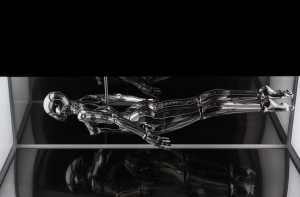On January 30, the Platform for Innovation in Marketing (PIM) celebrated TrendFest 2025. In honor of two decades of marketing insights, TrendsActive was asked to write a trend report. The theme of the report was the “Complex Society,” exploring how brands can create value and relevance in an overwhelming and divided world.
Today, we share one of the three key insights from the report: the need for simplicity. In this short essay, we will explore why life feels so excessive nowadays, the effects this has on people, and how brands and organizations can support individuals in their search for (more) simplicity and control.
An Overwhelming World
As early as 1970, futurist Alvin Toffler expressed concerns about the rapid increase in social and material change in his book Future Shock. Driven by an unprecedented pace of technological advancement and an abundance of choices and information, people in modern society were predicted to become increasingly overwhelmed, disoriented, and stressed.
Fast forward to 2025, and we see that the amount of change, information, and choices has indeed exploded. Consider the following:
- Technological advancements accelerating exponentially, rather than linearly. As one computer scientist put it: “We will not experience 100 years of progress in the 21st century—it will be more like 20,000 years of progress.”
- A massive influx of information—in 2024, an estimated 147 zettabytes of new data was created daily. For reference, one zettabyte equals approximately 30 billion movies in 4K resolution.
- An overwhelming number of choices—choosing a university degree in the Netherlands today means selecting from over 420 programs, and searching for toothpaste on Amazon yields over 7,000 results.
- 24/7 access to dopamine sources, from social media and Netflix to food delivery, pornography, and more. Unlike in the past, we now have endless forms of distraction and entertainment available at all times.
- The perceived shrinking of time and space—faster communication, transportation, and globalization make distances less relevant, allowing us to accomplish more in less time. Efficient, but also overwhelming.
All these factors have a profound impact on us. While our surroundings have drastically changed, our fundamental needs (and brains) remain nearly identical to those of our ancestors thousands of years ago. The only difference is how these needs manifest in a new social context. For example, our need for social connection remains, but the internet has reshaped how we fulfil that need.
Why we want control
Another unchanging human need is self-determination. According to the Self-Determination Theory (SDT) by Deci and Ryan, autonomy (along with competence and relatedness) is crucial for optimal motivation and well-being. In other words, we want to feel a sense of control over our lives.However, that sense of control is becoming harder to attain.
Why do we lose control?
1. More rapid changes
Changes occur rapidly, requiring us to constantly adapt. Online trends are more fleeting than ever, and even job markets shift unpredictably—ten years ago, learning to code was a great career move, but now major companies are already discussing how AI will replace many of these tasks in the near future.
2. Macro issues
Reading the news often exposes us to a relentless stream of (predominantly negative) global crises, over which we, as individuals, have little to no control. The world is burning, and there’s nothing we can do about it. As a result, we feel increasingly powerless. This diminishes our sense of autonomy and, in turn, our self-determination.
3) Too many choices
At the same time, we seemingly have more choices than ever—from major life decisions like education and careers to small ones like choosing between dozens of peanut butter options at the supermarket.
Paradoxically, more choice doesn’t necessarily mean more autonomy. According to psychologist Barry Schwartz, an overabundance of options leads to decision paralysis instead. Too many choices make decision-making harder, and we often feel less satisfied afterward, plagued by the thought that we could have made a better choice.
The Battle for Our Attention
4) Little to no control over our own attention
Another crucial element of our self-determination is attention—how much control we have over what we focus on. In a world filled with endless stimuli and information but limited time, we must make choices. However, in reality, our attention is often hijacked by commercial “attention thieves” that bombard us with alert signals we struggle to resist, as noted by German neurophilosopher Thomas Metzinger.
Both online and in the physical world, we are surrounded by commercial messages competing for mere seconds of our time to leave an imprint. To capture attention, they use bright colors and sounds that trigger our biological reflexes. The goal of these ads is often to highlight our perceived shortcomings, luring us into imagining how much better our lives could be if we just bought this or that.
No wonder a 2019 study found that increased advertising spending in a country correlates with a subsequent decline in life satisfaction. A hypothetical doubling of ad expenditures would lead to a 3% drop in overall life satisfaction among the population.
The constant bombardment of commercial stimuli not only drains our attention but also diminishes our well-being.
So now what?
So, what can businesses do to remain relevant and meaningful in an overwhelming world?
One key recommendation from our report is: offer simplicity. Instead of adding to the overload, help make life more manageable. While the execution varies by industry and brand, some strategies include:
- Reducing the number of choices available
- Using social proof (showing what others in similar situations choose and why)
- Minimizing distractions like excessive notifications and alerts.
- Using simple (visual) language
- Streamlining processes to require fewer steps to complete an action
Brands Leading with Simplicity
A great example of a brand embracing simplicity is Sherwin-Williams, with their Speaking in Color feature. This AI-driven tool helps architects find the perfect paint color by allowing them to describe their desired shade using words, memories, or emotions. The tool then generates a palette that can be refined with simple instructions like “a little brighter” or “add more blue.” This makes the selection process much easier and more intuitive.
Another example is the Yellow Sticker Cookbook, a web app developed by Uncommon Creative Studio. This app helps consumers create meals using discounted supermarket items (marked with yellow stickers). By scanning a product, users receive immediate, budget-friendly recipe suggestions, removing the need to figure it out themselves.
Finally, Dopper, a reusable water bottle brand, has made using its product simpler. Instead of developing its own app, Dopper partnered with Google Maps to add 1,900 public water refill stations across the Netherlands. This integration allows users to easily find refill points without needing an additional app, reducing reliance on single-use plastic bottles.
The Challenge for Brands
Most brands today contribute to the overwhelming flood of information, choices, and fast-paced change. But instead of overwhelming consumers, how can you help them regain control by offering simplicity?
On the 18th of February, we will present a webinar where we discuss all the insights from the report and you can already download the full report on our website here.

Author
Douwe Knijff
Share the signal.











